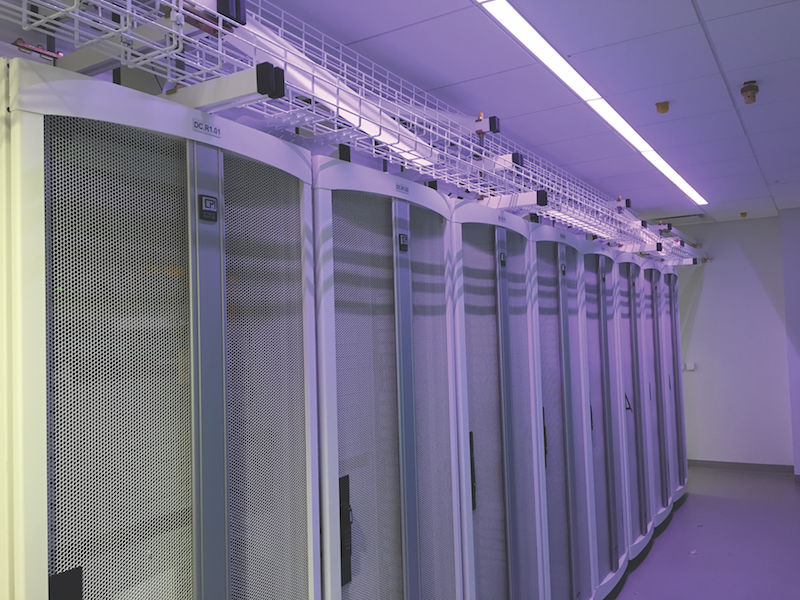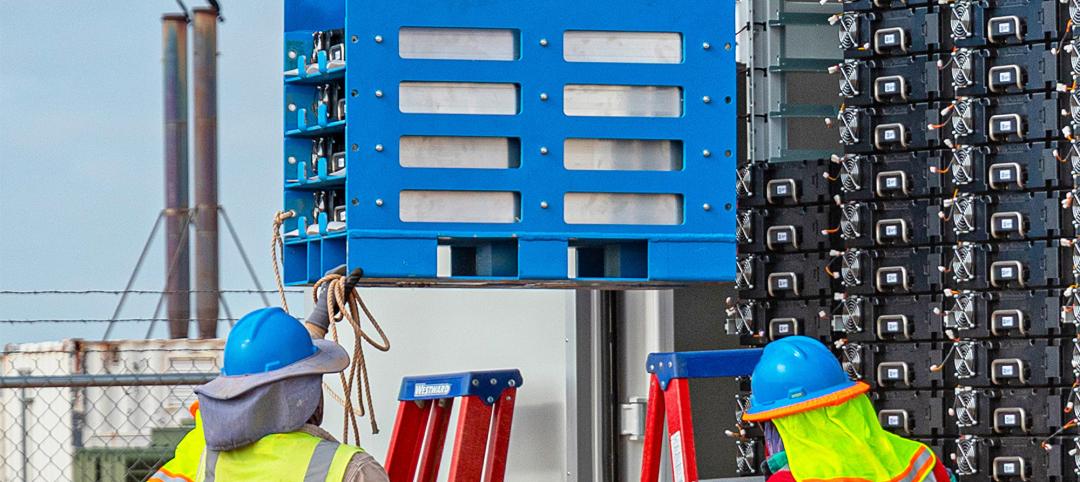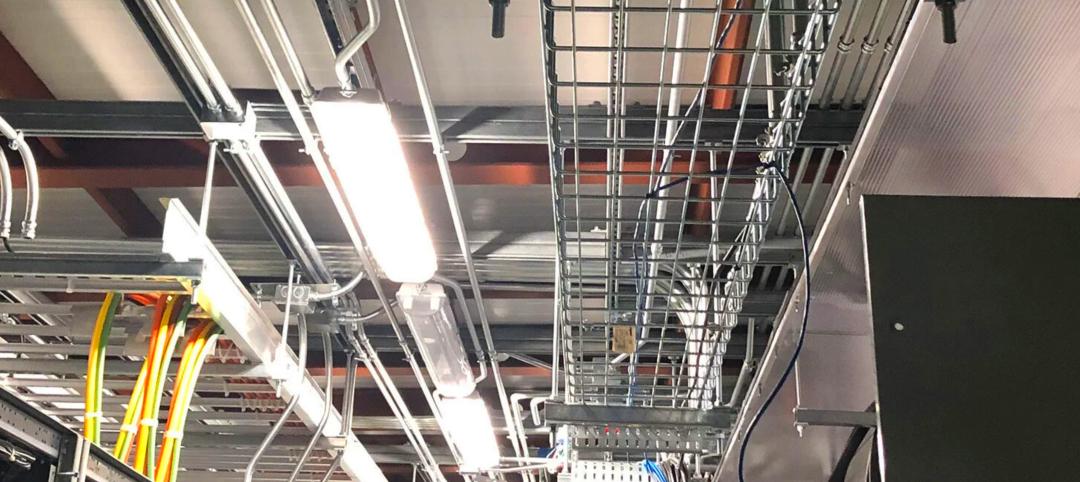As more companies move their data processing and computing to the cloud or co-location centers, some still want to maintain IT centers that are main distribution facilities (MDFs), “points of presence for their IT departments,” says Robert Sty, SmithGroup JJR’s Mission Critical Studio Leader.
Over the past two years, SmithGroup has been getting more requests from clients for micro data centers that provide that presence. One such facility is a 2,500-sf data center inside a two-story, 60,000-sf commercial office building in the Phoenix area, whose construction was completed last May.
Sty requested that the names of the client, the general contractor, and the designer of the building be withheld. But he did confess that this data center was “kind of an afterthought,” as it was being planned while the building was under construction.
The micro data center holds 32 server cabinets, supporting mechanical and electrical equipment (N+1 configuration), a shipping/receiving area, and an IT lab for build/burn-in testing for servers.
“It was like putting 10 pounds in a five-pound bag,” he says. To make this work, SmithGroup JJR raised the cabinet density to 7kW per unit. “But that created a heat load,” says Sty, which would be problematic if the cooling system went down.
The solution was to install a battery-powered flywheel backup uninterruptible power supply (UPS) onto the computer room air conditioner so the fans would keep circulating air during a power failure.
SmithGroup also deployed hot-aisle containment, a method of cooling that uses a physical barrier to guide hot exhaust airflow from server racks back to the AC return. It cools the front and back of the aisles, and mwwaintains an average room temperature of 70-75ºF.
Sty says that any client whose IT group asks for a micro data center that never goes down needs to appreciate that offices and other nonresidential spaces don’t always have the necessary infrastructure, such as a second utility feed or centralized cooling plant. Floors under data centers need to be able to handle at least 150 pounds per sf, compared to the 50-100 psf that offices are built to support. (The Phoenix office was designed to carry the heavier load.)
Data centers, regardless of size, take up more space than most clients realize. “We had to get real tight” with the mechanical and electrical equipment to keep it off of the data center floor, says Sty.
So far, the client’s feedback has been positive. Phoenix had an unusually hot summer, with outdoor temperatures rising as high as 117ºF. But the data center “has been holding the temperature to where it’s easy enough to work around,” says Sty. And the clearances proved to be satisfactory, even with larger cabinets.
Related Stories
Giants 400 | Aug 22, 2023
2023 Giants 400 Report: Ranking the nation's largest architecture, engineering, and construction firms
A record 552 AEC firms submitted data for BD+C's 2023 Giants 400 Report. The final report includes 137 rankings across 25 building sectors and specialty categories.
Giants 400 | Aug 22, 2023
Top 175 Architecture Firms for 2023
Gensler, HKS, Perkins&Will, Corgan, and Perkins Eastman top the rankings of the nation's largest architecture firms for nonresidential building and multifamily housing work, as reported in Building Design+Construction's 2023 Giants 400 Report.
Market Data | Aug 1, 2023
Nonresidential construction spending increases slightly in June
National nonresidential construction spending increased 0.1% in June, according to an Associated Builders and Contractors analysis of data published today by the U.S. Census Bureau. Spending is up 18% over the past 12 months. On a seasonally adjusted annualized basis, nonresidential spending totaled $1.07 trillion in June.
Data Centers | Apr 14, 2023
JLL's data center outlook: Cloud computing, AI driving exponential growth for data center industry
According to JLL’s new Global Data Center Outlook, the mass adoption of cloud computing and artificial intelligence (AI) is driving exponential growth for the data center industry, with hyperscale and edge computing leading investor demand.
Sustainability | Apr 4, 2023
NIBS report: Decarbonizing the U.S. building sector will require massive, coordinated effort
Decarbonizing the building sector will require a massive, strategic, and coordinated effort by the public and private sectors, according to a report by the National Institute of Building Sciences (NIBS).
Energy | Mar 20, 2023
Battery energy storage market predictions are trickier than ever
Burns & McDonnell breaks down the state of battery energy storage today, from pricing concerns to alternative solutions.
Giants 400 | Feb 9, 2023
New Giants 400 download: Get the complete at-a-glance 2022 Giants 400 rankings in Excel
See how your architecture, engineering, or construction firm stacks up against the nation's AEC Giants. For more than 45 years, the editors of Building Design+Construction have surveyed the largest AEC firms in the U.S./Canada to create the annual Giants 400 report. This year, a record 519 firms participated in the Giants 400 report. The final report includes 137 rankings across 25 building sectors and specialty categories.
Data Centers | Feb 6, 2023
Modular electric rooms are the new normal
Southland Industries breaks down the prefabrication benefits of Modular Electric Rooms (MERs).
Sponsored | Resiliency | Dec 14, 2022
Flood protection: What building owners need to know to protect their properties
This course from Walter P Moore examines numerous flood protection approaches and building owner needs before delving into the flood protection process. Determining the flood resilience of a property can provide a good understanding of risk associated costs.
Data Centers | Nov 28, 2022
Data centers are a hot market—don't waste the heat!
SmithGroup's Brian Rener shares a few ways to integrate data centers in mixed-use sites, utilizing waste heat to optimize the energy demands of the buildings.
















